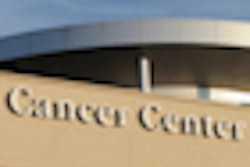Researchers at the Wellman Center for Photomedicine at Massachusetts General Hospital (MGH) have developed an imaging system enclosed in a capsule about the size of a multivitamin that creates detailed, microscopic images of the esophageal wall.
The system has several advantages over traditional endoscopy and could be a new way to screen patients for Barrett's esophagus, a precancerous condition usually caused by chronic exposure to stomach acid. The findings were published in Nature Medicine (January 13, 2013).
The device is convenient in that it does not require patient sedation, a specialized setting and equipment, or a physician who has been trained in endoscopy, explained Gary Tearney, MD, PhD, of the Wellman Center and the MGH Pathology Department. By showing the 3D microscopic structure of the esophageal lining, it reveals more detail than can be seen with high-resolution endoscopy.
The system developed by Dr. Tearney and his colleagues involves a capsule containing optical frequency domain imaging (OFDI) technology -- a rapidly rotating laser tip emitting a beam of near-infrared light and sensors that record light reflected back from the esophageal lining. The capsule is attached to a string-like tether that connects to the imaging console and allows a physician or other health professional to control the system.
After the capsule is swallowed by a patient, it is carried down the esophagus by normal contraction of the surrounding muscles. When the capsule reaches the entrance to the stomach, it can be pulled back up by the tether. The images are taken throughout the capsule's transit down and up the esophagus.
The researchers tested the system in 13 unsedated participants -- 6 known to have Barrett's esophagus and 7 healthy volunteers. The physicians operating the system were able to image the entire esophagus in less than a minute, and a procedure involving four passes -- two down the esophagus and two up -- could be completed in about six minutes. A typical endoscopic examination requires that the patient stay in the endoscopy unit for approximately 90 minutes.
The detailed microscopic images produced by the OFDI system revealed subsurface structures not easily seen with endoscopy and clearly distinguished the cellular changes that signify Barrett's esophagus. The researchers were surprised to find that, once the pill has been swallowed, it is "grasped" by the esophagus, allowing complete microscopic imaging of the entire wall.
Study participants who had previously undergone endoscopy indicated they preferred the new procedure.



















